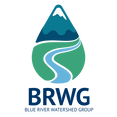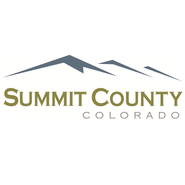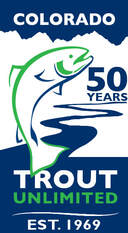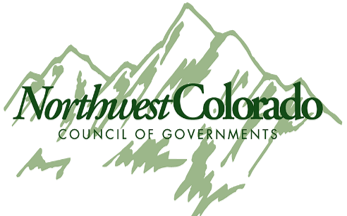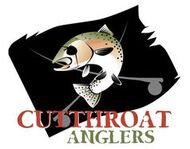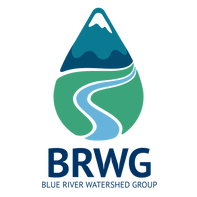Integrated Water Management Plan
In 2016 the Blue River below the Dillon Dam in Silverthorne lost its Gold Medal status due to declining ecosystem health which affected the fishery. The community and local organizations came together in an attempt to remedy the underlying causes of the degradation of water quality, lack of habitat, and other issues leading to the loss of the Gold Medal status. BRWG partnered with Trout Unlimited and a diverse advisory committee made up of the original concerned community members to create an Integrated Water Management Plan (IWMP) for the Blue River Watershed.
The IWMP provides a comprehensive roadmap for future water use, restoration projects, and other solutions to the issues that currently threaten the health of the watershed. The IWMP will continue to guide the strategic direction of BRWG for the next several years through ongoing scientific research and resource evaluation, planning of restoration projects and acquiring funds to sustain those projects, implementation of projects that have secured funding as well as evaluating and maintaining completed projects.
The Blue River Habitat Restoration Project, born from the research and findings of the IWMP, is currently in its planning phase and you can read more about this impactful project here.
Learn more about the IWMP and how you can be involved below:
The IWMP provides a comprehensive roadmap for future water use, restoration projects, and other solutions to the issues that currently threaten the health of the watershed. The IWMP will continue to guide the strategic direction of BRWG for the next several years through ongoing scientific research and resource evaluation, planning of restoration projects and acquiring funds to sustain those projects, implementation of projects that have secured funding as well as evaluating and maintaining completed projects.
The Blue River Habitat Restoration Project, born from the research and findings of the IWMP, is currently in its planning phase and you can read more about this impactful project here.
Learn more about the IWMP and how you can be involved below:
Frequently asked questions
Q: What is the IWMP?
A: The acronym stands for Integrated Water Management Plan and it is a framework of scientific studies and research that provides us with a better understanding of what the Blue River needs to become a thriving healthy ecosystem despite impacts from dams and reduced flow, poor water quality, and increased recreational use.
Q: Why do we need an IWMP for the Blue River Basin?
A: The long-term goal of the IWMP is to enable all water users to plan for current and future use and integrate those uses for the maximum benefit of all users while protecting the existing water resource and the fragile ecosystems it supports.
Q: Where are we at in the process?
A: The project has published up Phase 1, conducted field research for Phase 2, and is in the project proposal and planning parts of Phase 3.
Q: What are the phases of the IWMP?
A: There are 3 Phases including: researching the problems, collecting data and information on how the problems can be solved, and project design and implementation.
Phase 1 was an information gathering phase. We compiled current research, management plans and stakeholder input. A big takeaway is that we do not know the reason(s) for the declining Blue River trout fishery between Silverthorne and Green Mountain Reservoirs.
Phase 2 involved collecting additional data in several areas in order to present the community with a comprehensive picture of the health of the Blue River watershed. This phase pinpointed effective strategies to address the declining fishery between Dillon and Green Mountain Reservoirs.
Phase 3 is in process. We are in the process of implementing the newly created Blue River Habitat Restoration Project to assist in improving and maintaining the health of our watershed.
A: The acronym stands for Integrated Water Management Plan and it is a framework of scientific studies and research that provides us with a better understanding of what the Blue River needs to become a thriving healthy ecosystem despite impacts from dams and reduced flow, poor water quality, and increased recreational use.
Q: Why do we need an IWMP for the Blue River Basin?
A: The long-term goal of the IWMP is to enable all water users to plan for current and future use and integrate those uses for the maximum benefit of all users while protecting the existing water resource and the fragile ecosystems it supports.
Q: Where are we at in the process?
A: The project has published up Phase 1, conducted field research for Phase 2, and is in the project proposal and planning parts of Phase 3.
Q: What are the phases of the IWMP?
A: There are 3 Phases including: researching the problems, collecting data and information on how the problems can be solved, and project design and implementation.
Phase 1 was an information gathering phase. We compiled current research, management plans and stakeholder input. A big takeaway is that we do not know the reason(s) for the declining Blue River trout fishery between Silverthorne and Green Mountain Reservoirs.
Phase 2 involved collecting additional data in several areas in order to present the community with a comprehensive picture of the health of the Blue River watershed. This phase pinpointed effective strategies to address the declining fishery between Dillon and Green Mountain Reservoirs.
Phase 3 is in process. We are in the process of implementing the newly created Blue River Habitat Restoration Project to assist in improving and maintaining the health of our watershed.
Check out our Q&A Instagram Live event recordings
Update - phase 3
Released July 2023
Additional research completed in spring, summer, and fall of 2022. Study area is downstream of Dillon Dam to determine the potential causes of the declining fishery.
The attached files include a habitat restoration master plan to improve the fisheries.
The attached files include a habitat restoration master plan to improve the fisheries.
| Blue River IWMP Master Plan.pdf | |
| File Size: | 46337 kb |
| File Type: | |
| Technical Report Dillon Dam to USFS Blue River Campground2023.pdf | |
| File Size: | 15363 kb |
| File Type: | |
| Referenced: CPW Blue River in Silverthorne_2018.pdf | |
| File Size: | 3984 kb |
| File Type: | |
Update - phase 2
Published May 2022
Additional research completed in spring, summer, and fall of 2021. Study area is downstream of Dillon Dam to determine the potential causes of the declining fishery.
|
| ||||||||||||||||||||||||
IWMP: Phase 1
Read The SUMMIT Daily's summary of the iwmp's report on river health
|
|
Project details by Phase
|
Phase 1:
Objective 1. To understand the potential causes of the declining fishery between Dillon and Green Mountain reservoirs and determine whether (and how) the decline can be reversed or mitigated. Objective 2. To compile, review and integrate existing basin studies, plans and other information regarding physical and biological aspects of the Blue River basin water resources for the purpose of formulating objectives and goals that will guide future water management decisions. Project staff established an Advisory Committee who guide and inform the identification of concerns and important issues, goals and objectives, analyses and studies, framework for long-term monitoring and the development of a community driven plan that will be carried forward into Phase 2. The committee will meet at all major junctions of the process and will be made up of representatives of the major stakeholder groups including (but not limited to):
If you are interested in being a member of the IWMP Advisory Committee, please contact info@blueriverwatershed.org. We will be hosting our next Advisory Committee (AC) meeting after our project team reviews the comments provided from the AC on the draft report for Phase 2. Sign up for our newsletter to ensure you are notified of current dates and events. |
Phase 2: Assess declining fishery between Dillon and Green Mountain Reservoirs
Phase one's results have pointed to the need for additional data in several areas in order to present the community with a comprehensive picture of the health of both the main stem of the Blue River and the entire watershed. The project team believes that additional data is needed throughout the watershed but is especially important in our effort to pinpoint effective strategies to address the declining fishery between Dillon and Green Mountain Reservoirs. The following tasks will be completed in Phase 2 to build upon the work completed thus far:
Outreach Phase Spring/Summer 2023:
Develop and Implement Goals and Objectives
The information generated by the Project Staff and Consultants will be utilized to inform the Blue River community and Advisory Committee on relevant issues and support the development of the IWMP through implementation goals and objectives in Phase Two. Those goals and objectives will likely include multi-use projects and innovative water management techniques that will be vetted through the development of environmental, agricultural and recreational values and goals that will be identified during community meetings and through the Advisory Committee review and recommendation process.
Projects will consider the following among many other factors:
Phase one's results have pointed to the need for additional data in several areas in order to present the community with a comprehensive picture of the health of both the main stem of the Blue River and the entire watershed. The project team believes that additional data is needed throughout the watershed but is especially important in our effort to pinpoint effective strategies to address the declining fishery between Dillon and Green Mountain Reservoirs. The following tasks will be completed in Phase 2 to build upon the work completed thus far:
- Task 1: Develop scientifically valid restoration strategies through evaluation of existing stream flows – both temporally and quantitatively – in relationship to the geomorphology of the stream.
- Task 2: Sample macroinvertebrates at 10 sample sites in 2021 (following the same protocol from 2020). Eight of these sites were sampled in 2020, and two of these sites will be new in 2021.
- Task 3: Sample periphyton at 8 sample sites (coincident with Macro sites) 3 times during the growing season. This will build on the initial samples taken in 2020 from the Blue River at the macro-invertebrate sampling sites and subsequently analyzed.
- Task 4: Create temperature profiles at the sample sites to offer variable correlations and demonstrate habitat conditions.
- Task 4: Continue to work closely with stakeholders including the Advisory Committee and BREW to ensure the BRIWMP project stays on track with community priorities and concerns. Members of these groups also provide critical expertise in a wide variety of subject areas.
- Task 5: Integrate the findings of Phase 2 into an updated BRIWMP.
Outreach Phase Spring/Summer 2023:
Develop and Implement Goals and Objectives
The information generated by the Project Staff and Consultants will be utilized to inform the Blue River community and Advisory Committee on relevant issues and support the development of the IWMP through implementation goals and objectives in Phase Two. Those goals and objectives will likely include multi-use projects and innovative water management techniques that will be vetted through the development of environmental, agricultural and recreational values and goals that will be identified during community meetings and through the Advisory Committee review and recommendation process.
Projects will consider the following among many other factors:
- All collected and existing available studies, restoration efforts, data, and anecdotal information.
- Water operations, diversions for local and major water users.
- Recreational users such as the boating and angling community (river and marinas) and skiing and golf community.
- Conditions of agricultural irrigation and producers infrastructure.
Header photo courtesy of Bill Linfield.
